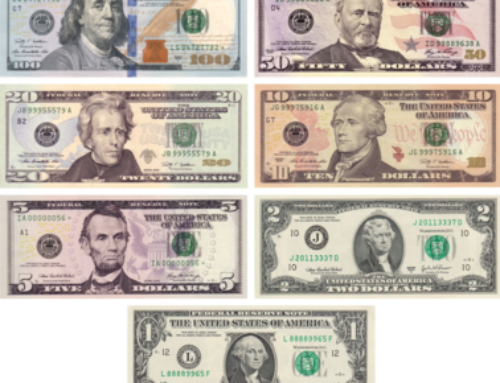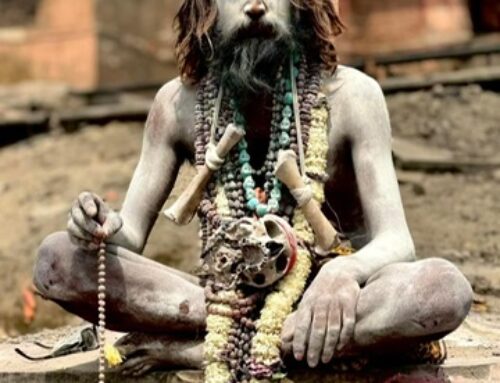I have been fortunate to try a fair number of cigars, both at home and abroad.
Cuban cigars are currently illegal in the United States, except for pre-embargo cigars which are very rare and perhaps not well stored. Technically, an American citizen cannot even legally purchase or smoke a Cuban cigar while traveling abroad, although many Americans have indulged in Canada, Mexico, the Caribbean, or Europe, among other places where Cuban cigars are sold. I have to say, Cuban cigars may be overrated as the forbidden fruit.
Pre-ban, Cuban cigars were rated the best in the world–no doubt due to the fact that Americans comprised the majority of the cigar market of the world and bought all the Cubans could make. Today, Americans buy nearly all the Dominican, Honduran or Nicaraguan cigars that can be made, and they can even taste better than the previously famous Cuban cigars, which have also declined along with everything else in Cuba since the Americans left.
But being an authentic Cuban cigar does make it the forbidden fruit for Americans and, therefore, desirable to some connoisseurs. To prove the point, one can expect to pay as much for top Dominican and Nicaraguan cigars as for many mediocre Cubans.
I used to attend quite a few cigar tastings. And, the best Dominican cigar currently available is arguably the Fuente Fuente Opus X. And, the Padron 1926 could be the best cigar from Nicaragua. Depending on your individual taste, these cigars will likely be better than most anything currently rolled in Cuba.
Macanudu is a good cigar and has an interesting history in Jamaica and now the Dominican Republic. The label was a spin-off from Punch, which is also a decent cigar. Arturo Fuente has a similarly mediocre story and taste, along with Hoyo de Monterrey, which is one of the least expensive, decent cigars and mild tasting (so if purchasing a cigar for a lady who “wants to try one” I always recommend the Hoyo de Monterrey. Somehow they like the name as well, as it sounds something like Playa del Carmen. They should love the Romeo y Julieta for the name alone, but they rarely think it is really translated as it is, “Romeo and Juliet” for if they did, it would be the number one selling cigar anywhere in the world, and I am happy it is not, for the price remains fair.
Cohiba cigars may be considered as Cuban cigar industry’s leading brand and are my least favorite in taste but most favorite as a business ideal. These cigars first appeared in 1968, at first being supplied only to the top government officials. Since 1982 Cohiba cigars are marketed worldwide and have succeeded in capturing the top image. This is communism at its finest. And, communism, at it’s finest has proceeded to turn them into pure crap. They are not worth purchasing at any price, in my opinion, and it is very likely you will have a counterfeit if purchased at a reasonable price. The Dominican Cohiba is nice, but not worth the price in my estimation as well. Sorry, as I hate to shoot down “the best” as I really would like to like these cigars, if nothing else for their image of luxury, which still harbors to some degree, even if the Dominican goes for just $7 in a bully and $10 in a Churchill (when ordering by the box), which seems to recognize their limited status in and of itself.
Montecristo is the cigar brand that enjoys the greatest popularity in the world (i.e., it has become the Marlborough of cigars, which is reflective in its taste). This used to be the primo cigar. Now, approximately 50% of Cuban cigars are produced under this brand and Montecristo is the standard by which all Cuban cigars are evaluated. Montecristo No. 2 cigars (around $10 each when ordered by the box) and Montecristo No. 4 cigars (which are the world bestseller) are famous for their unique spicy flavor which many cigar lovers call “the true Cuban cigar taste”. I find them mediocre and it’s about as big of a cliche as saying a Marborlo has a “true American taste.” What does that even mean these days?
Partagas is another top selling Cuban cigar brand to offer cigars of various sizes and shapes. All cigars manufactured under this brand usually carry the flavor of Partagas coffee and chocolate. I used to love Partagas. Even the name sounds sexy, Party and Mardi Gras, combined. But in the end, the party ended and I parted ways with the Partagras.
Diplomaticos brand was founded to offer the Montecristo cigars line at somewhat lower prices, targeting mostly the French market. The bestseller is Diplomaticos 4 and is a good value. This is best smoke I ever enjoyed in France. After I took them back home, I have to confess that I didn’t enjoy them as much. It’s something like Pastis, which should only be enjoyed in the south of France.
Hoyo de Monterrey and H. Uppmann are also best-selling brands, both hand-made and machine-made. Both used to be my favorites as well, especially the Uppmann in the silver tube which was very luxe and looked slightly naughty to most women I knew.
But to me, the best of all Cuban and non-Cuban cigar brands is the Romeo y Julieta brand. These cigars are very popular worldwide,although the brand was founded to cater for the local market only–the Cuban market. The Romeo y Julieta marque was established in 1875 by Inocencio Alvarez and Mannin Garcia. The brand is named for Shakespeare’s famous tragedy, Romeo and Juliet. Between 1885 and 1900, the brand won numerous awards at different tasting exhibitions (as still evidenced by the gold medals on the brand’s logo). However, the brand truly blossomed after being acquired by Jose “Pepin” Rodriguez Fernandez, former head of the Cabañas factory in Havana, and his firm, Rodríguez, Argüelles y Cia, in 1903. Being a very cosmopolitan man, Rodriguez constantly travelled across Europe and the Americas, actively promoting his brand, and entering his horse, the aptly named Julieta, in racing events across the world. Another plus in enjoying this brand, if you are a horse person.
As a result of his salesmanship, the brand became exceptionally popular around the world, particularly among wealthy customers, many of whom demanded personalized bands for their cigars. At its height, as many as 2000 personalized cigar bands were produced for customers. The brand was also known at this time for specializing in figurado cigars, such as perfectos and pirámides, with over a thousand such shapes believed to have been in production.
Sir Winston Churchill was perhaps the brand’s most famous devotee. The flagship shape of the brand (and since copied by all other manufacturers) is named in his honor, a long 7″ by 47 ring gauge cigar known as the Churchill. But, I prefer the bully at 5x5o and $80 instead of $103 per box.
After Rodriguez’s death in 1954 at 88 years old, the revolution, and the subsequent nationalization of the tobacco industry (meaning the communist government came in and seized the factories, threw out the families that owned them, stole all of their money and took over their brand label), the family brand of Romeo y Julieta (like almost all other Cuban labels) was moved to La Romana in the Dominican Republic, where production of a Romeo y Julieta cigar for the American market continues today under the direction of Altadis SA. The Cuban government nationalized (a nice word for “stole”) the brand name and still produces and distributes it worldwide as one of its top-selling global brands. So there are two companies selling the same brand–the family who invented it and had to flee their homeland with a few seeds and plants with cash in hand, and the communist government factory attempting to replicate what this family invented in Cuba with communist farming techniques at a state-owned plantation. You figure it out, but Cuban cigars may not be what they used to be. Visit the two plantations and see what goes into the production and please tell me if you think the Cubans are doing it better?
In the United States, authentic Cuban-made cigars are seen as “forbidden fruit” for Americans to purchase. Many more are made elsewhere and sold under counterfeit “Cuban” relabeling. Upon the expropriation of private property in Cuba, many former Cuban cigar manufacturing families (with their tobacco seeds in hand) moved to other countries (primarily the Dominican Republic) to continue production. Dominican Republic’s production of tobacco grew significantly as a result. After reallocation, most Cuban manufacturers continued to use their known company name, seed, and harvesting technique while Cubatabaco, Cuba’s state tobacco monopoly after the Revolution, independently continued production of cigars using the former private company names. As a result, cigar name brands like Romeo y Julieta, Gloria Cubana, Montecristo among others, exist in both Cuba and the Dominican Republic. Honduras and Nicaragua are also produce many cigars.
While Partagas Robustos, Espada, and Macanudo are all great, my all-time favorite cigar is still the Romeo y Juliet Bully 5×50, whether it is Cuban or Dominican. Thompson Cigar Company was my favorite place to fill my humidor from mail order, but Cigar International is my new favorite for fresh and prompt delivery of primo cigars. They sell the Romeo y Julieta Bully cigars at $79.95/box plus free shipping, which is about the price I paid in college, 25 years ago from today in 2011, so it’s hard to beat that price and the freshness was top notch. Thomson was over a $100 for the same thing, so I have a new favorite place for cigars. Those we know, don’t notice a lot of difference in the Cubans, but they may be a bit spicer and rougher than the Dominicans. Nothing worth writing home over, but certainly a bit different. From either island, we prefer them to all the others. And, as my French friend likes to say, “There is no arguing in matters of taste.”





